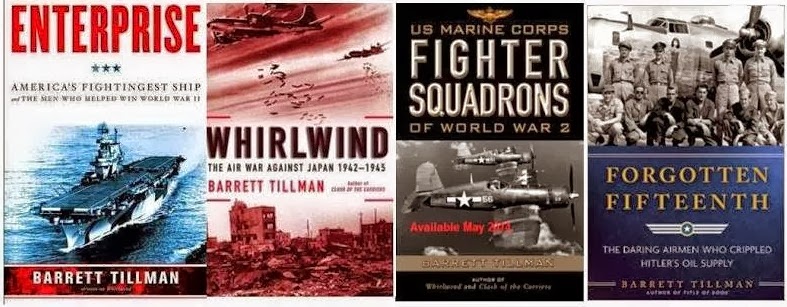Ukraine is in the news daily owing to the persistent threat of Russian invasion. But when reputedly only about two-thirds of younger Americans can identify the U.S.A. on a world map, some background may be helpful.
Depending on definitions, Ukraine is the fifth most populous nation in Europe, as the autonomous republics of Crimea and Sevastopol on the Black Sea boost the population from 41 to 48 million. The latter figure is smaller than Italy (59 million) but larger than Poland (38 million).
At 603,000 square miles, Ukraine is the second largest of 51 European states in area, after Russia and ahead of France. It is bounded by Russia some 1,400 miles from southeast to northeast; Belarus to the north; Poland, Slovakia and Hungary to the west ; and Romania to the southwest.
The Ukrainian language is distinct from Russian although both use the Cyrillic alphabet with minor differences. A friend who grew up speaking both compares them to Spanish and Italian.
Russia and China are Ukraine’s major trade partners, as exports include iron and steel, grain, electronics and computers. Two of Russia’s major sources of helicopter engines are Ukrainian.
With the foregoing in mind, here’s a combined assessment from two learned commentators: George Mellinger, one of the leading Western scholars on the Soviet and Russian military; and my brother John who took Russian studies at Stanford and toured the Warsaw Bloc from Oxford.
* * * * * *
It is that old damned concept of Spheres of Influence. We proclaimed ours with the Monroe Doctrine, and later the Zimmerman Telegram incident. And even more sharply with Cuba since 1959. And again in Grenada 1983. It is our right, and one we should be invoking in Venezuela and Central America. Every nation asserts its sphere where it can. And needs to know its boundaries. The culture, religion, and history of Russia and Ukraine place them together. At the same time, NATO, formerly defensive, has become aggressively expansionist. Like Macedon in the 3rd Century BC, the Mongols, Bonaparte, and the Soviet Empire, NATO pursues its momentum of success. In fact, even the new United States followed the principle with several thwarted attempts to expand into Canada.
What would be the consequence if NATO were to succeed in defending Ukraine? Surely it would be necessary to incorporate Ukraine and reclaim Crimea, which would become a 21st Century analogue of Alsace-Lorraine.
The Georgian conflict of 2008 and the recent Armenian-Azeri war would surely offer yet another need for further spread. Not to mention an urge to spread Western Enlightenment northward into Russia's "soft underbelly.” As they used to say, ”Bearing the European Man's burden.” And that is assuming NATO succeeds.
What will Putin do, and what is his intent? A good chess player makes both defensive and offensive moves, and a great one plays so that his moves are both simultaneously.
While we hear about Putin's 130,000 troops along the fronts, Ukrainian President Zelensky's forces supposedly number 250,000, though it appears Russia's are better organized and equipped, but with very weak logistics and supply capabilities.
To borrow a trope, Russia's Army appears overwhelmingly capable on Tuesday, Thursday, and Saturday, and totally incompetent on Monday, Wednesday, and Friday. That is "the fun challenge" of war both as a game and reality. You only find out with the actual engagement.
Some westerners anticipate that Ukraine would become "Putin's Vietnam.” If Russia were to occupy Western Ukraine that is a distinct possibility. The Ukrainian National Army maintained an active, armed resistance from the end of 1944 until 1962, and that was against Stalin and Khrushchev, either of whose brutality contrasts against Putin's relative restraint.
However, in a hypothetical war, a NATO "liberation" of Luhansk, Donbas, and Crimea could well prove to be "NATO's Vietnam.” It has already proven for the past seven years to be "Ukraine's Vietnam,” which I do not expect my earlier "NATO Success" scenario to actually occur. It’s that old rule of dog's fighting best on their own turf.
And here I'd like to venture an analogy with Africa. When the European colonial empires decolonized during the 1960s, the national boundaries of the new African nations were drawn according to the lines of the old colonial possessions with scant regard for cultural and tribal realities, often dividing tribes between nations while uniting hostile tribes together in the same nation.
Something analogous happened after the collapse of the old, little-lamented Russian Empire. Lenin and Stalin started reshuffling the cards trying to assure that it would be impossible for the various Soviet Socialist Republics to ever disentangle themselves. That sort of worked so long as you had a tyrant ruler, but when it came apart, it became a real dog's breakfast, much like a full scale copy of the Yugoslav test model. Hell, the first Armenian-Azeri war, and several clashes in Central Asia among different flavors of Turk and Iranian neighborhoods began even before Boris Yeltsin. There are many millions of people in this world who who have absolutely no willingness to be Mister Rogers' neighbor.
*
Deploying 8,500 US troops to Poland and Romania, plus new sanctions, are unlikely to deter Putin, should he decide it's in his best interests to invade Ukraine.
Ukraine's active ground forces numbered 169,000 in 2016, but probably more than that now. Most of them, however, are tied down are tied down in the Donbas. Its independent air assault forces contain seven brigades, plus support units.
Ukrainian brigades are unlikely to be fully manned. Still, being generous, those decent troops could total 20,000. Special operations forces are credited with 4,000. The air force and navy add 45,000 and 6,500 active personnel. Thus, today presumably Ukraine could field 250,000 active armed forces members. It's also building up its citizen territorial defense force though some are training with wooden weapons and may not be ready for a winter invasion.
Putin wouldn't invade with just 100,000 ground troops. He'd probably beef up that number substantially, to an estimated 100 battalion tactical groups, i.e., 33 brigade-equivalents or 11 divisions. Plus airborne and naval infantry. Add in his overwhelming air and seapower, and Ukraine doesn't stand a chance, in my chairborne ranger opinion.
Russia probably lacks sufficient logistical train to sustain thrusts up to ten likely avenues of attack, but it doesn't need to. Just reinforce those armored columns that make the best progress.
Russian maneuver brigades are unlike any other such formations in the world. They have as many self-propelled gun-howitzer, multiple rocket and antitank missile and artillery battalions as they have tank and mechanized infantry. Plus two air defense battalions, one all SAM and the other a mix of AAA and missiles, like the antitank battalion. A U.S. brigade has just one howitzer battalion and no AT or AD battalions. But all this firepower requires trucks to keep the batteries supplied. The Russians might ease their logistics problems by leaving several anti-air units behind.
An invasion might begin with seizing the Black Sea coast with a drive out of Crimea, supported by naval infantry, to deprive Ukraine of resupply by sea. On the first night, Russian airborne troops could seize all Dnepr bridges and dams. Attacking out of Belarus, Russian forces could cut off Kyiv in days, and shut down its power in overnight. Columns south and north of the Donbas would aim to encircle the bulk of Ukraine's army there. Other columns would aim to relieve the airborne troops on the Dniepr.
Presuming the almost certain Russian victory, then what? Guerrilla conflict is a possibility, especially if supported by NATO member states.
Meanwhile, let us keep our eyes on the geo-strategic horizon. China claims the whole world as its sphere of influence, and a Russian-occupied Ukraine would not alter that fact.



